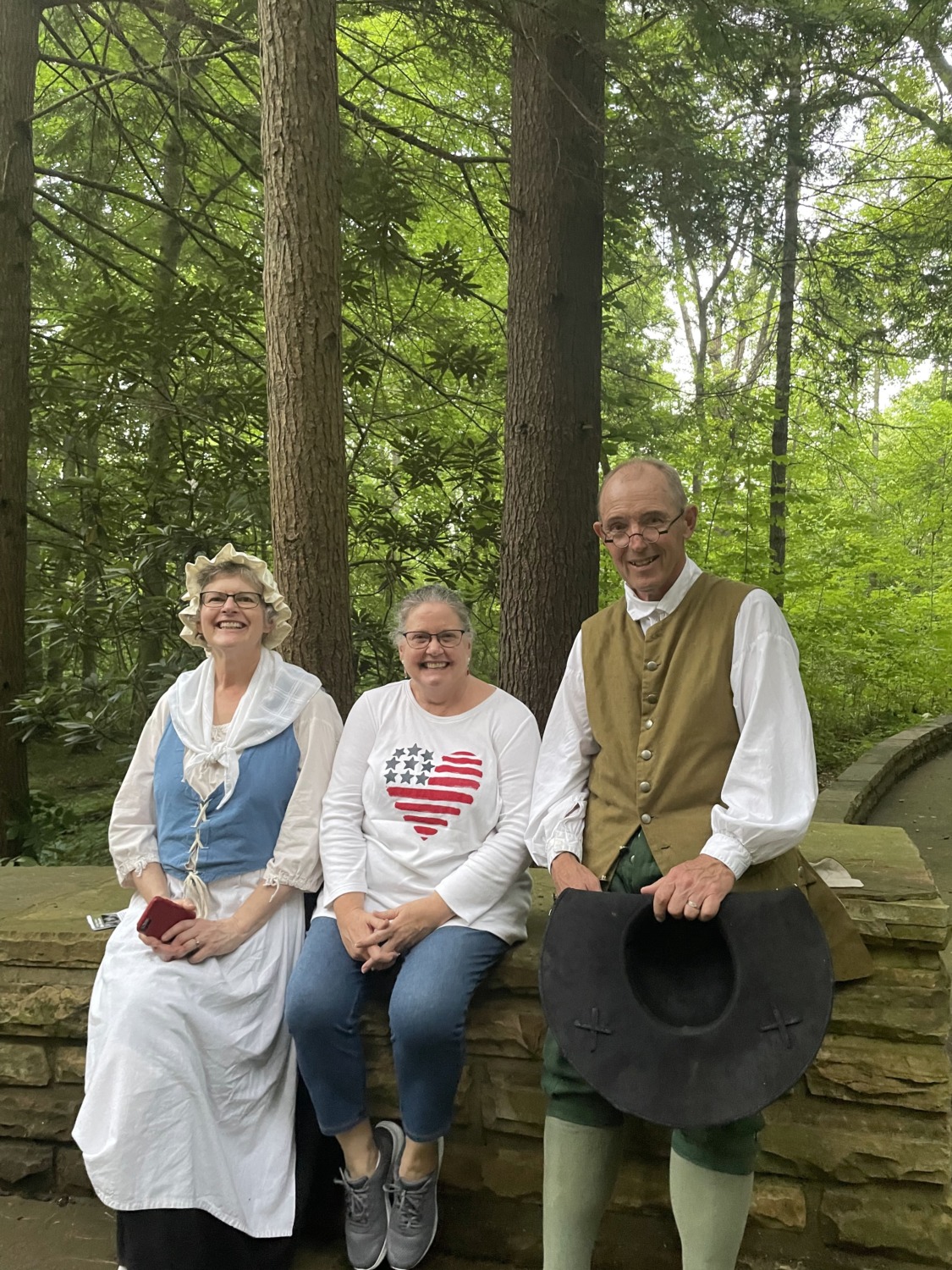Every Saturday night there is a Campground Program at Cumberland Gap Wilderness Trail Campground. These have been a fun addition to our activities over the summer. We have attended two of the programs and led one.
Rachel, our Bat Education intern, leads a Night Hike every other week. She does the same walk and talk each time, so we have only attended it once, even though she has given it three times since we have been here. Her talk focuses on the ways animals around us use their senses. The Night Hike is good for this because, although not done in darkness, the twilight makes it harder for us to see.

Rachel asks questions and, when people answer them, she gives them a snake. When she first mentioned the snakes, I asked if they were real. I didn’t want to answer a question and be given a real snake. She assured me they were not. Instead, they look like little Creepy Crawler snakes. Kids loved getting them for answering the questions correctly.
As Rachel gave her talk, she invited us to imagine the animals using their senses. Then she invited us to use our senses as we walked through the woods. What did we see, hear, smell, and feel? She didn’t invite us to taste anything – probably some liability in that.
The second campground talk was by the Fern Guy, Steve Roberts. He was very interesting. We went to that talk when our friends were here and we spent the rest of the week looking at ferns in a new way. I wasn’t aware of the variety of ferns we had in Cumberland Gap National Historical Park. I also learned about the different structures of fern leaves. The Fern Guy taught us about how ferns reproduce (usually spores) and how to recognize different species of ferns.

Soon after we heard the Fern Guy talk, we went to Sugar Run trailhead. Along Sugar Run Creek, we found several kinds of ferns, the most abundant being Christmas fern. It is the only kind I can identify reliably because the leaf is pinnate and looks like a Christmas sleigh. But that is one more than I could identify reliably before this talk.
Tom and I presented the third campground program that we attended. We chose “Tri-State Trivia” as our subject. We asked questions that related to the area of Kentucky, Tennessee, and Virginia where we are living. We expected mostly campground people to attend, but discovered that these special programs draw a lot of local people as well. Pamela and Chuck Blank came and introduced themselves to us after the program. Paul and Sherrie, who have been to a lot of the programs in the park, were there as well.
Tri-State Trivia was a lot of fun to prepare. We interspersed some activities that we designed for children between the trivia categories. Tom did a short talk on Colonial Surveying. He intended to use some children as “pins” but the pins kept moving. I demonstrated buzzer buttons and had some kids and adults come down to try them. Tom led a Civil War Cypher lesson and people had a lot of fun with that.
We got good feedback from the program and intend to give it again sometime in the next month. There will be some changes, such as not using 3 and 4 year-olds for surveying pins.
Would you like to try your hand at some Tri-State Trivia questions? Tom and I had 40 questions in our program, but here are 10 to get you started. The answers are at the end, under the picture.
- What was the first permanent settlement in Virginia?
- What two Native American tribes were predominant in Kentucky and Tennessee?
- What was the first permanent settlement in Kentucky?
- Which of the three states was one of the 13 original colonies?
- Who is the Cumberland Gap named after?
- Which state’s name means “meeting place”?
- What is the state song of Kentucky?
- What is the state song of Virginia?
- What is the state song of Tennessee?
- What is the only city in the United States built in a meteor crater?

Answers:
- What was the first permanent settlement in Virginia? In 1607 Jamestown was established in Virginia. It was named after King James I. It was also the first permanent English settlement in North America.
- What two Native American tribes were predominant in Kentucky and Tennessee? Shawnee and Cherokee
- What was the first permanent settlement in Kentucky? In 1774 Harrodstown (now Harrodsburg) was established as the first permanent settlement in the Kentucky region. It was named after James Harrod who led a team of area surveyors.
- Which of the three states was one of the 13 original colonies? Virginia.
- Who is the Cumberland Gap named after? Duke of Cumberland, the British General who defeated the Scottish in the Battle of Culloden.
- Which state’s name means “meeting place”? Tennessee
- What is the state song of Kentucky? “My Old Kentucky Home”
- What is the state song of Virginia? “Our Great Virginia” replaced “Carry Me Back to Old Virginny” in 1998.
- What is the state song of Tennessee? Tennessee has 12 state songs, including “Rocky Top,” “My Homeland, Tennessee.” “When It’s Iris Time in Tennessee,” “My Tennessee,” “Tennessee Waltz,” “Smoky Mountain Rain,” “Tennessee,” “The Pride of Tennessee,” “A Tennessee Bicentennial Rap,” “The Tennessee in Me,” “Tennessee,” “Copperhead Road.”
- What is the only city in the United States built in a meteor crater? Middlesboro, Kentucky
